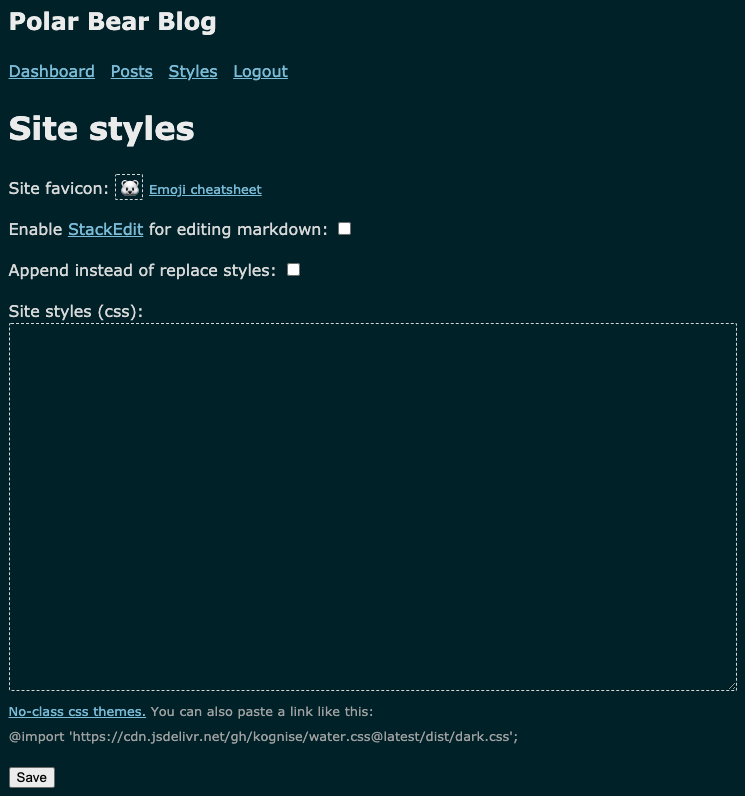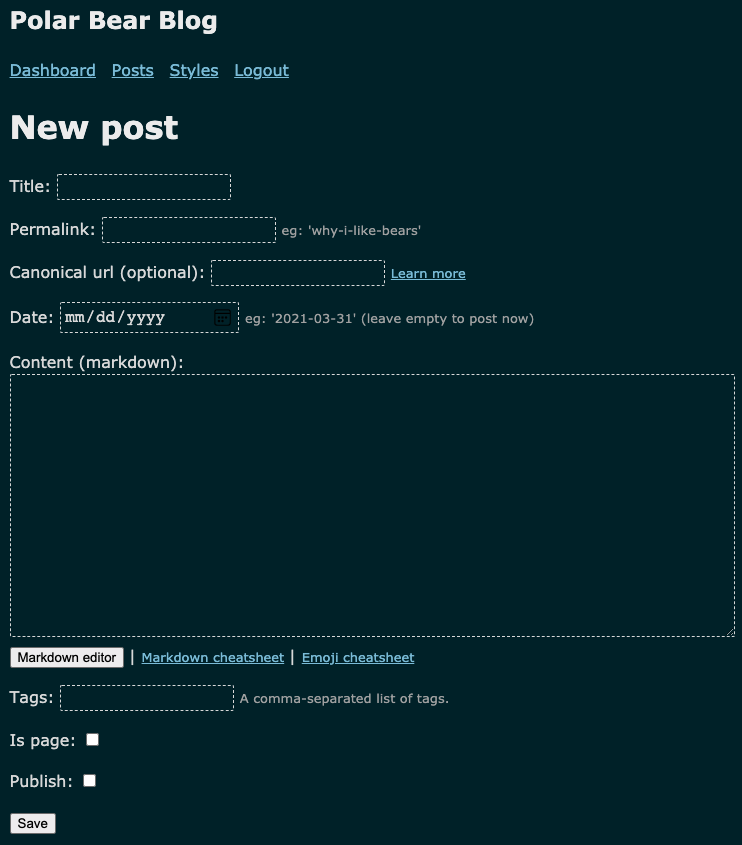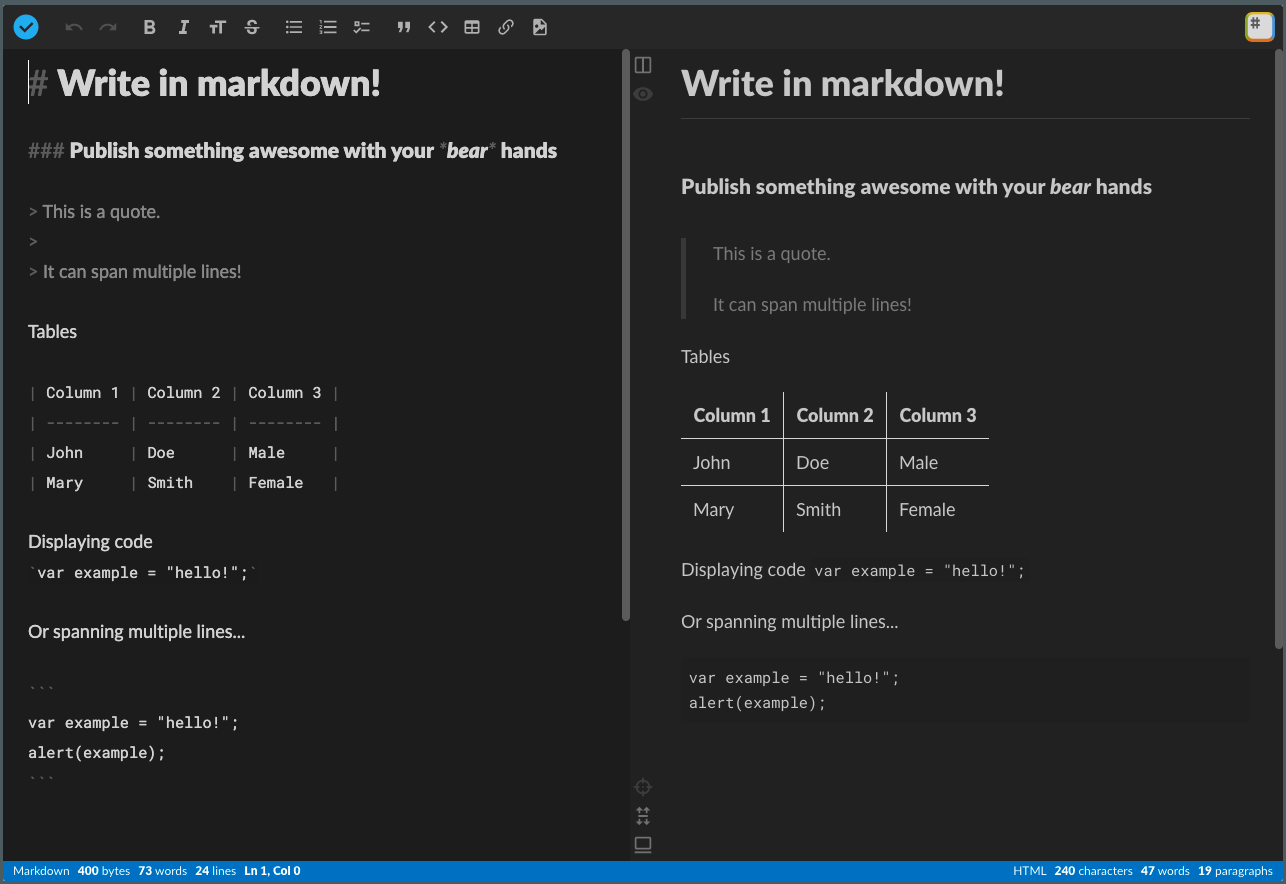A modified and selfhostable version of PandaBlog, which is a fork of PolarbearBlog.
- Clone the repository:
git clone https://github.com/chenghui-lee/pandablog-selfhost - Create a new file called
.envin the root of the repository with this content:
# App Configuration
## Session key to encrypt the cookie store. Generate with: make privatekey
export PBB_SESSION_KEY=
## Password hash that is base64 encoded. Generate with: make passhash
export PBB_PASSWORD_HASH=
## Username to use to login to the platform at: https://example.run.app/login/admin
export PBB_USERNAME=admin
## Enable use of HTML in markdown editors.
export PBB_ALLOW_HTML=false
## Optional: enable MFA (TOTP) that works with apps like Google Authenticator. Generate with: make mfa
# export PBB_MFA_KEY=
## Optional: set the time zone from here:
## https://golang.org/src/time/zoneinfo_abbrs_windows.go
# export PBB_TIMEZONE=America/New_York
# MFA Configuration
## Friendly identifier when you generate the MFA string.
export PBB_ISSUER=www.example.com
# Cache TTL
## Cache TTL in case multiple instances are running and other instances made updates, default is 1m
## See https://pkg.go.dev/time#ParseDuration for format
export PBB_CACHE_TTL=1m
# Local Development
## Set this to any value to allow you to do testing locally without GCP access.
## See 'Local Development Flag' section below for more information.
export PBB_LOCAL=true- To generate the
PBB_SESSION_KEYvariable for .env, run:make privatekey. Overwrite the line in the.envfile. - To generate the
PBB_PASSWORD_HASHvariable for .env, run:make passhash passwordhere. Replace with your password. Overwrite the line in the.envfile. - To create the session and site files in the storage folder, run:
make local-init - To start the webserver on port 8080, run:
make local-run
The login page is located at: http://localhost:8080/login/admin.
To login, you'll need:
- the username from the .env file for variable
PBB_USERNAME- the default is:admin - the password from the .env file for which the
PBB_PASSWORD_HASHwas derived
Once you are logged in, you should see a new menu option call Dashboard. From this screen, you'll be able to make changes to the site as we as the home page. To add new posts, click on Posts and add the posts or pages from there.
When PBB_LOCAL is set, the following things will happen:
- data storage will be the local filesystem instead of in Google Cloud Storage
- redirects will no be attempted so you can use localhost:8080
- MFA, if enable will accept any number and will always pass validation
- Google Analytics will be disabled if set
- Disqus and Cactus will be disabled if set
To run the application using docker, clone the repository and perform the following copy operations:
cp storage/initial/session.bin storage/session.bin
cp storage/initial/site.json storage/site.json
Then modify the docker-compose.yml according to your preferences.
At last, run docker-compose up -d and the application is accessible at localhost:8080.





